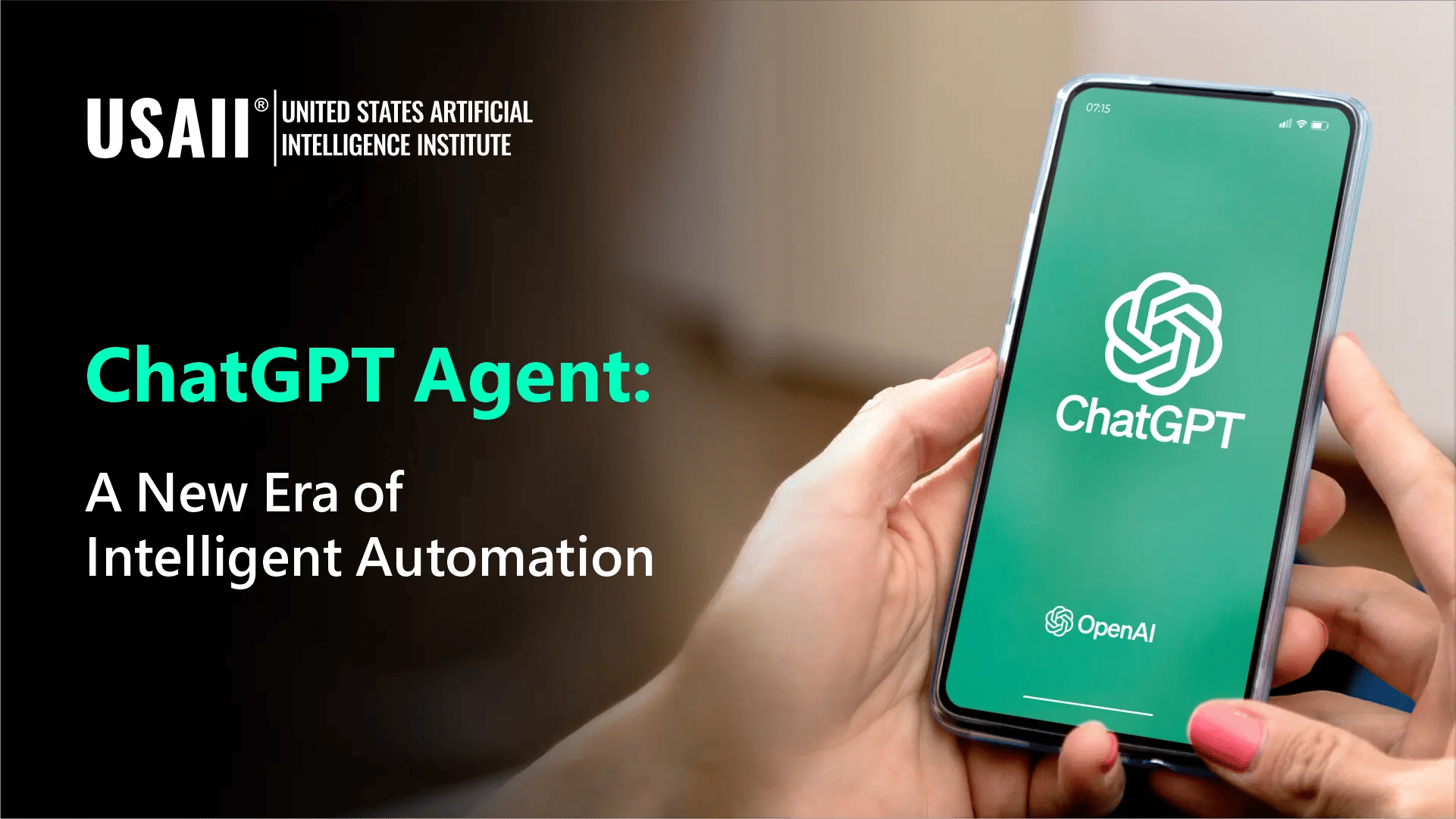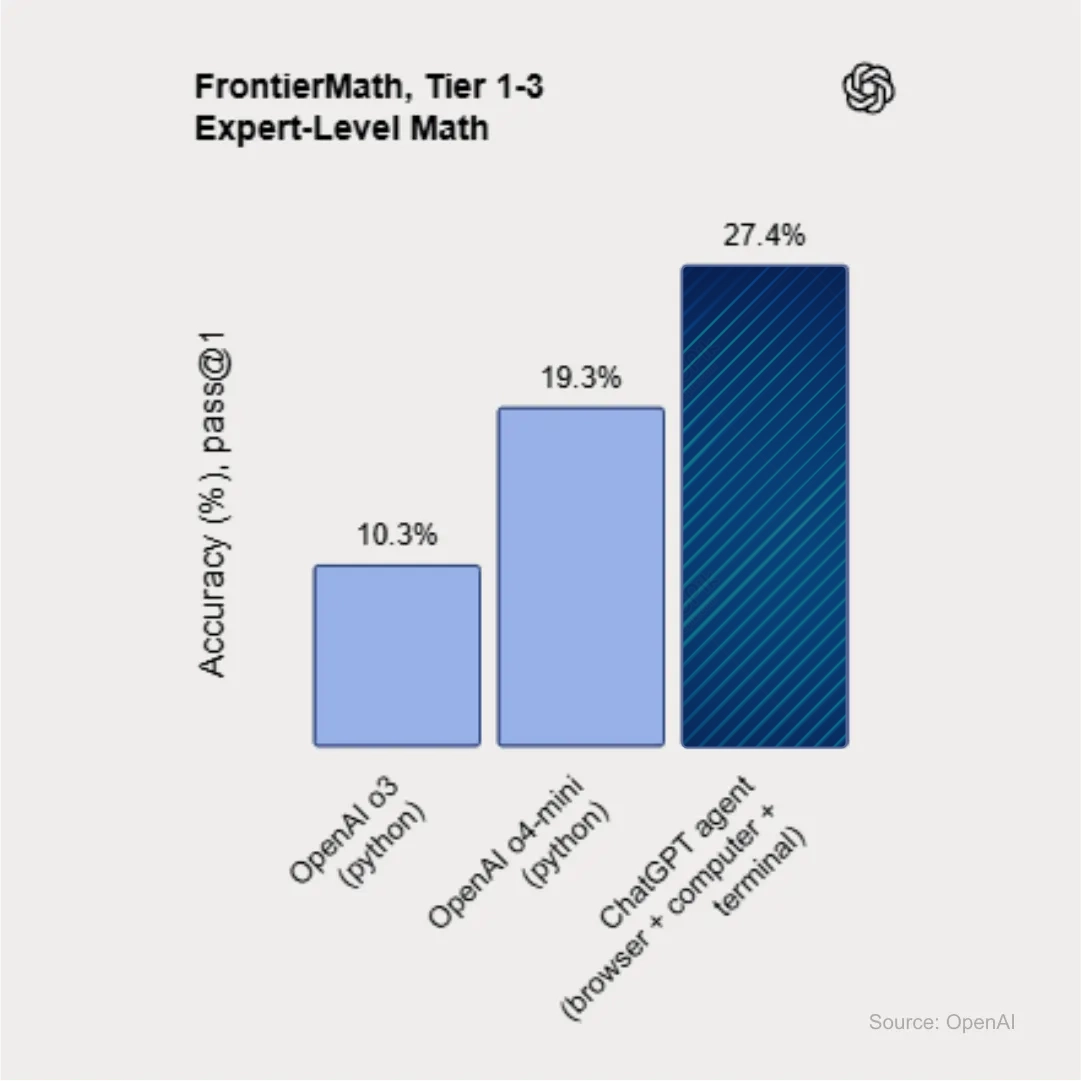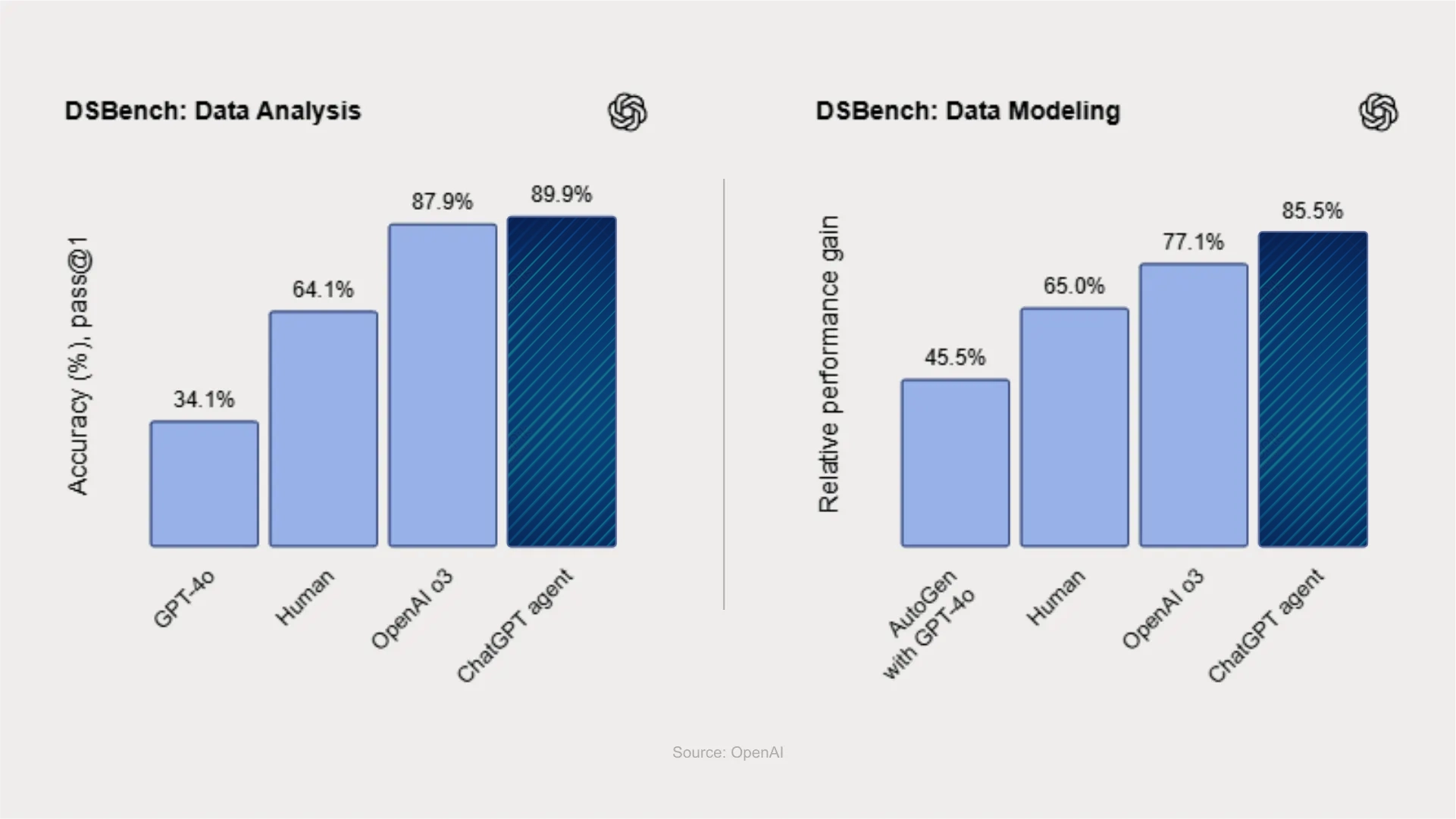
On July 17, 2025, OpenAI unveiled its ChatGPT Agent, a multitasking AI that not just chats but acts as well. With seamless integration capabilities from previous tools like Operator and DeepResearch, this new agent uses its own virtual computer to execute complex workflows from start to finish.
In this article,
What can ChatGPT Agent do?
Why Does It Matter?
Evolution of Operator and Deep Research
Never Seen Before Capabilities
Designed for Real-World Applications
How Can Users Access ChatGPT Agent?
With Great Features Comes Greater Risks
Limitations and Future Goals
In Summary!
What can ChatGPT Agent do?
For example, it might plan a breakfast menu, purchase ingredients, analyze your calendar, build a competitive analysis slide deck, and even run supporting code, all under your oversight.
We can imagine how powerful this AI assistant can be.
It is scheduled to be available for ChatGPT Pro users by the end of Thursday, whereas ChatGPT Plus and ChatGPT Team users will get access to this in the next few days.
Enterprise and Education plan users will get to use this in subsequent weeks.
Why Does It Matter?
OpenAI’s launch of the ChatGPT Agent is a huge milestone in making AI truly agentic, i.e., making machines that can take real actions and handle tasks on your behalf instead of just answering questions.
Though tech giants like Google and Perplexity have introduced AI agents before, many early models fell short when handling complex workflows.
OpenAI claims its new AI agent is significantly more advanced, and it can connect to tools like Gmail and GitHub, access a terminal, and use APIs to interact with other apps. This is particularly important as it allows the agent to complete multi-step tasks.
The following are the core components of ChatGPT Agent that make it such an incredible tool:
ChatGPT is not just a glorified chat, but a chat with agency.
Evolution of Operator and Deep Research
ChatGPT Agent is a natural evolution of OpenAI’s earlier tools, Operator and Deep Research, each having distinct strengths. While Operator could interact with web pages efficiently, Deep Research is great at analyzing and summarizing content.
But both of these had certain limitations when used separately.
The operator lacked deep analytical skills, and Deep Research couldn’t interact with websites or access content behind logins.
By merging their capabilities and with the addition of new tools, OpenAI has created a single and powerful AI model.
ChatGPT Agent can now browse websites, refine results in real time, and seamlessly shift from conversation to action, all within one unified experience.
Never Seen Before Capabilities
ChatGPT Agent is built for dynamic, collaborative workflows, and therefore, it is far more interactive than its previous versions.
You can step in at any moment to refine instructions, shift directions, or change the task entirely, and the agent will adapt without losing its prior progress.
This AI assistant can also proactively ask for classification if needed and ensure its actions are aligned with your goals. Also, if it takes too long or seems to be off track, then you can pause it and request a progress update, or even stop it, still enjoying partial results.
The new ChatGPT mobile app can give a notification when your task is complete and make it easy to stay in sync.
Designed for Real-World Applications
ChatGPT Agent brings real-world utility to both work and personal life by automating tasks like building presentations, planning events, updating spreadsheets, or booking travel.
Its advanced capabilities demonstrate how powerful this AI tool is and reflect state-of-the-art performance, scoring a new high of 41.6 on Humanity’s Last Exam, rising to 44.4 with parallel task strategies and self-evaluation.

FrontierMath is the most challenging math benchmark to date, consisting of original, unpublished problems that can take expert mathematicians hours or even days to solve. With access to tools like a terminal for running code, ChatGPT Agent achieves 27.4% accuracy, significantly outperforming earlier models by a wide margin.

On DSBench, a benchmark that assesses agents on real-world data science tasks such as analysis and modeling, ChatGPT Agent outperforms human performance by a substantial margin.

How Can Users Access ChatGPT Agent?
To use ChatGPT’s new agentic features, users can simply select ‘Agent Mode’ from the tool’s dropdown in the composer during any conversation.
They only need to describe their task, like conducting research, creating slides, or submitting expenses, and the AI assistant will get to its work with on-screen narration showing its progress.
Users can step in and take control at any time.
The agent can also connect with users’ apps like Gmail or Calendar to retrieve and act on relevant information. However, they will still need to log in manually when security is needed.
Tasks can also be scheduled to recur automatically, like generating a weekly metric report every Monday morning.
With Great Features Comes Greater Risks
With the release of ChatGPT Agent, which can take real actions on the web for the first time, we will be witnessing AI agents with powerful capabilities. However, this can also introduce new meaningful risks.
Since it can interact with your data through connectors or via logged-in sessions, OpenAI has implemented strict defense mechanisms.
It includes requiring explicit user confirmation before any impactful action, limiting access, and improving protection against prompt injection attacks, where malicious content in any webpage can trick the agent into unintended behavior.
Users can also pause and take over tasks at any time, and enhanced privacy settings allow them to delete browsing data or log out of sessions instantly.
Limitations and Future Goals
ChatGPT Agent is still in its early phase, and while it can handle a wide range of complex tasks, it certainly comes with certain limitations.
Its slideshow creation features, which are currently in beta phase, show promise but often lack polish, especially when generating presentations from scratch.
OpenAI has given special focus on editable, well-structured outputs with native text, charts, and images, but the formatting inconsistencies between the preview and export files are frequently visible.
Unlike spreadsheets, slideshows can’t yet be edited from uploaded templates.
Improvements are already underway to enhance formatting, quality, and flexibility, and in the future, it is expected to boost the agent’s performance, minimize human oversight, and expand its real-world utility.
In Summary!
A whole lot of AI skills and expertise are required to properly build and use such advanced tools. Whether you are looking to become an AI engineer and design such efficient AI models or want to leverage these tools to enhance your regular work and business operations, having the right skill, knowledge, and training can be highly transformative for your career.
With the globally recognized and updated AI Certifications from USAII®, you can learn the underlying AI concepts and principles to build, design, deploy, or integrate AI agents into your workflows.
OpenAI's ChatGPT Agent is a quantum leap that merges browsing, coding, document creation, and autonomy in one conversational package. It works, but it’s preliminary. Expect glitches. Oversee actions. Be experimental with it. For those ready to step into agent-driven workflows, the future starts now.
Follow us: